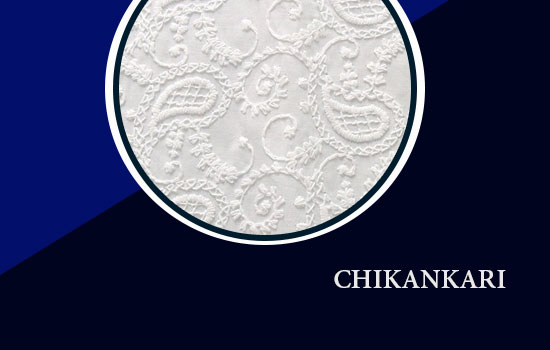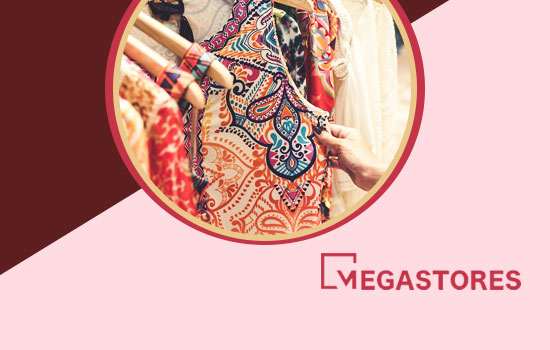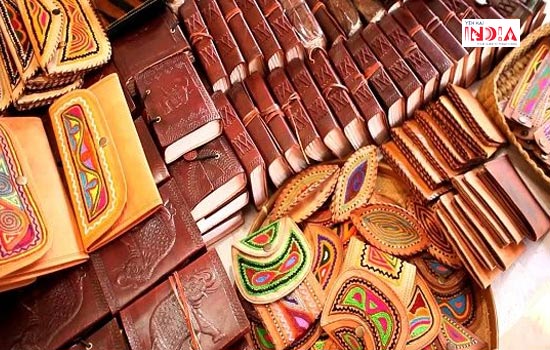Lucknow, the city known for its interesting blend of traditional culture and modern values, not only leaves you spellbound with its architectural masterpieces, rich history of the Nawabs, or lip-smacking kebabs but also excels in the art of embroidery.
Chikankari is one of most popular art of embroidery and in literal terms means embroidery. It is an ancient form of fabric embellishment which is now famous all around the world.
Let’s step into the world of this elegant art and know what’s the repute all about.
Recommended Story – Megastores; Mega Artisans
A Brief Overview of Chikankari
Chikan work at the beginning of its tale had only white-on-white embroidery and was introduced by the Mughals. With time, the art of Chikankari grew to become one of the most special forms of fabric embroidery with discrete fabrics, designs and colours.
Primarily handcrafted by women artisans and workers, Chikankari easily transforms the plainest of the cloth into a beautiful and elegant piece of art on any fabric.
The simple yet detailed hand work over any kind of garment gives it a classy and subtle look which can be counted under both heavy and simple design depending upon the occasion.
The timeless art of Chikankari has crossed decades of fashion statements with its beauty.
History and Origin of Chikankari
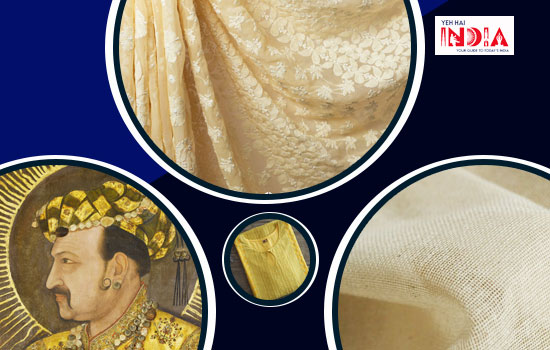
Like every historical story, Chikankari too has multiple assumptions and recorded facts that render us with the knowledge of its origin.
The dawn of Chikankari goes back to the 3rd century BC with two different tales mentioning its existence.
The first story mentions a traveler who shared the art of Chikan work with a peasant in exchange for drinking water; whereas the second tale gives the reference of an embroidery art similar to that of Chikan by the Megasthenes.
However, the most factual and truly considered emergence of Chikan work in India is the anecdote of Noor Jahan. The empress of the great Mughal emperor Jahangir introduced the art of Chikankari to India in the 17th Century.
During the early times, the favored fabric for Chikan was contemplated to be Mulmul or Muslin as it was best suited for the humid and warm climate.
It is believed that Noor Jahan was herself a trained embroiderer. Also, as Jahangir was fascinated by the handcraft of Chikan, he set up many workshops to perfect the art.
Even though the artisans of Chikankari spread all over the country after the deposition of the Mughal empire, Lucknow remained at the top.
The Process of Chikankari
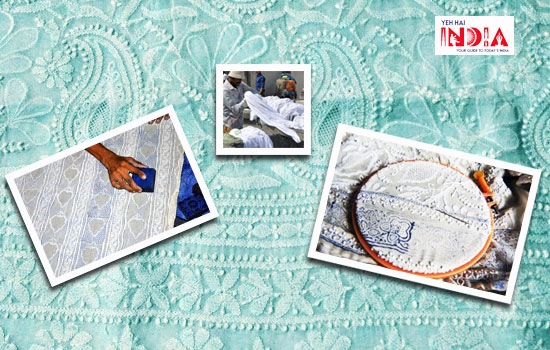
The process of bringing out the end product is lengthy and laborious. Chikankari is a three step procedure of block printing, embroidery and washing out.
The first step of block printing involves determining the design and engraving the same on the wooden block. After this, these blocks are dipped in dyes or Neel and stamped on the cloth which is to be embroidered.
Then comes the second step of embroidering the printed design where the needlework comes into action. The cloth is fixed into frames as the embroidery work is more intricate and effort-taking as compared to other steps.
The artisans craft the design in different forms of stitches depending upon the cloth and design.
The last step is the process of washing the cloth. The fabric is soaked in water for a while and then washed properly to remove any trace of ink left. Prior to the sale, the fabric is also starched to make sure the product looks as stiff as it is supposed to.
Recommended Story – Phulkari Artwork from Punjab- Wearing Rainbows
Types of Stitches
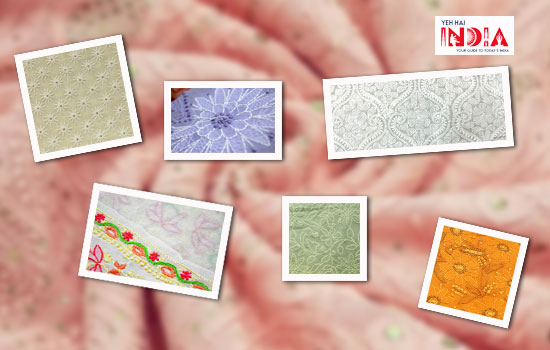
Tepchi- Tepchi stitching is mostly used to design the outline motif. One of the simplest forms of stitching in Chikankari, Tepchi is a linear and long-running stitch on the cloth.
Hool- In Hool stitching, a hole is punched on the cloth and the thread gets separated. This type of stitches is mostly used in making flower centers.
Bakhiya- The design of Bakhiya stitch is also known as ‘Ulti’ or ‘Seedhi’ Bakhiya. The major embroidery is done on the inner side of the fabric which forms a shadow-look on the outside with borders.
Rahet- Also known as ‘Dohra Bakhiya’, Rahet is mostly used to create outline stitches. It forms a solid lining on the right side.
Zanzeera- Zanzeera is a very delicately crafted stitch in Chikankari. It is mostly used to highlight the borders of the design and enhance them.
Jali- Jali is a very intricate form of stitching and requires a great level of expertise. What makes it different is the fact that the thread is never drawn through the fabric and so the cloth looks as impeccable on the inside as on the outside.
Phanda- One of the most common forms of stitching, Phanda is a millet shaped design crafted on the cloth. It is used to make the most common designs like the center of flowers and motifs.
Darzdari and Turpai- These are the most integral types of stitches in Chikankari. Kamal Darz, Shankarpara Darz and Kohi Darz are the types of Darzdari stitching while Turpai has an effect of a very thin thread on the fabric.
Apart from the above types of stitches, there is a lot more design availability in Chikankari like Makra, Karan, Sazi, Banjkali, etc. Each of these stitching designs is exceptional and different, providing us with a wider range of options.
Motifs, Colours and Varieties of Fabric
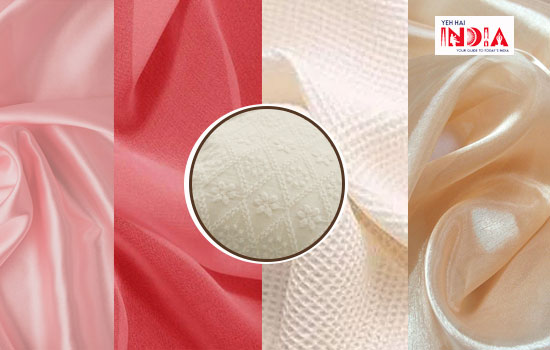
Chikankari is a Persian oriented art and therefore, the motifs and designs made are mostly floral with the addition of stems, leaves, etc.
Other than floral, Paisley motif with a bean-like appearance, has palm leaves, grass stalks, birds and animal motifs like peacock and butterflies, and geometrical and styled patterned motifs; making the art possibilities limitless.
It started with with white fabric and white coloured embroidery, however, Chikankari has now crossed the boundaries of basic common colours and is available in both traditional and exotic colour combinations.
Chikankari was established in the traditional Muslin cloth but has now swapped into lighter fabrics like Chiffon, Organza, Cotton, Silk and Georgette. The idea behind multiple fabric availability is that the level of effort required in light-weighted cloth is less than heavy and hard fabrics.
Products of Chikankari
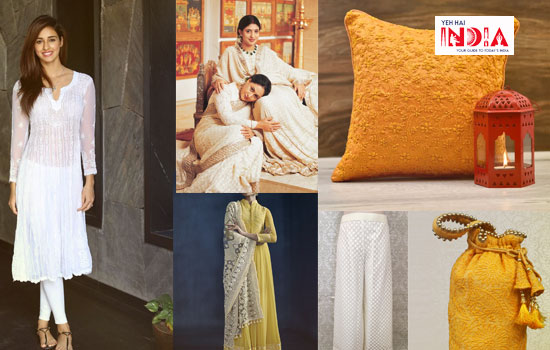
Chikankari has grown to become globally known fabric art. The craft of this state-of-the-art embroidery provides you with a wide range of clothing products.
Apart from clothes like Sarees, Kurtas, Dupattas, Tops, Lehengas, Dress Materials, Salwars, Skirts, etc; Chikankari is now also available in products like sofa and cushion covers, bed sheets, dining covers, bags, etc, and a never ending list goes on.
Clearly evident, the craft of Chikankari has successfully survived through centuries with efficient sustainability and still holds onto its exceptional charm.
All that has changed over time is the modification that has only made Chikankari gain importance and eminence all around the world, proving itself as timeless beauty.
Also Read – Love Embroideries? Checkout the 14 Exquisite Embroideries of India


